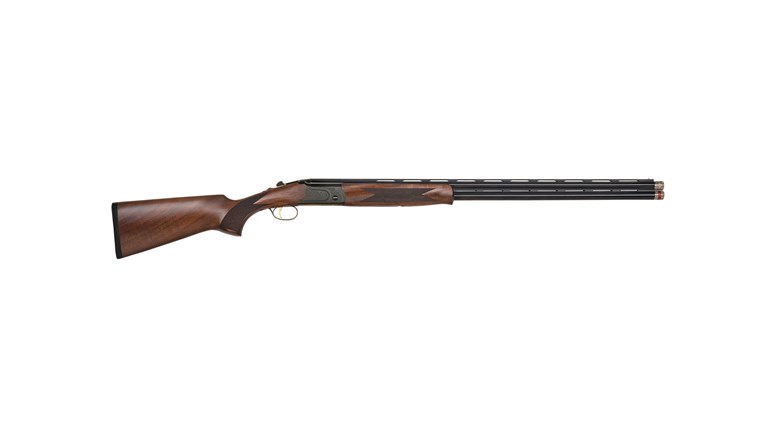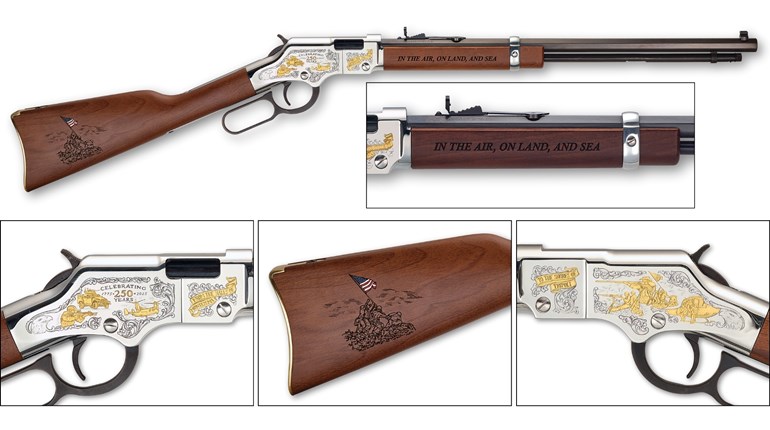
To say that lever-action firearms are of iconic American stature risks, to borrow from poet Alexander Pope, damning them with faint praise. Vastly chronicled in literature and film, the country’s westward expansion in the post-Civil War era appears at times to have progressed as much on the virtues of Spencers, Henrys and Winchesters (and Colts, Marlins, Savages and Mossbergs for that matter) as on the paddles of riverboats, or the wheels of prairie schooners or iron horses.
Nor were those virtues arcane. Since Day 2 of the gunpowder era—and early in the day, we posit—shooters had been looking for faster, more easily replenished methods to put powder power to work. Such work could easily become a life-and-death matter in frontier days, and the middle of the 19th century saw two crucial technologies finally align—mechanically sturdy metallic ignition/propellant/projectile cartridge systems, and breach (rather than muzzle) loading. To say that development snowballed as the 1800s closed would be an understatement: From rimfires to serious big-game calibers, lever guns were everywhere.
Failing to instantly visualize lever-action shotguns, however, doesn’t put one at odds with history or our Henry Lever Action. In fact, the type was left largely behind by the lever revolution for a number of reasons. Not least was the comparative fragility of shotgun ammunition—.410 or otherwise—especially when considered in the light of new, powerful smokeless propellants sweeping through almost all ammunitions of the time. John Browning’s 1887 (and subsequent 1901) designs for Winchester were exceptions, but even they were only modest commercial successes. Comparatively heavy and not exactly robust, both were out of production by 1920.
A century of “fast-forward” and right clever thinking gets us to the handsome, versatile 20-inch Henry Repeating Arms shotgun. Borrowing from the company’s updates to Benjamin Tyler Henry’s 1860 design, a .45-70 rifle-length action lends the dimensions needed for .410. The result is an immensely strong, soft-shooting and versatile shotgun.
The .410 bores (remember, not gauge) are often acknowledged as the choice for both beginners and experts—due to light recoil in the first case, and requisite precision in the second—but the Henry does so many things well that it will please an unsuspecting variety of shooters. As a traditional wingshooting choice, it runs a little to the heavy side (between 12 and 20 ounces heavier than other, comparable capacity shotguns), but this can be a benefit when it encourages better shooting posture. The cylinder bore puts a little pressure on getting shots at clays or game birds off quickly, but this can develop habits that are of decided long-term value.
As a small-game getter or pest controller, the Henry shines even brighter. With an adjustable semi-buckhorn rear sight, brass bead front and good trigger, the smaller .410 shot count still proves easy to put right where it will do the job. Quick follow-ups—ever the strong suit of lever guns—are a matter of ease. But Hollywood’s popularization of them has had a downside: Many folks unconsciously mimic the incorrect “dismount” of the gun from the shoulder in the process of running the lever.
Thanks in large part to the revival of lever guns by Single Action Shooting Society (sass, otherwise known as Cowboy Action Shooting) competition, the correct technique is easy to find by example. The Henry encourages the proper keep-the-gun-shouldered method with three expedients: It has a very comfortable butt pad, well-checkered forend, and a semi “pistol” style grip. Keeping the buttstock solidly against the shoulder has three benefits in its turn—extremely small sight movement (less, for instance, than pump-action), reduced felt recoil (because the stock stays tight to the shoulder) and enough rigidity to avoid short-cycling the lever/action.
A small but necessary caution deserves mention. It can be tempting to top off the ammunition in lever actions whenever there’s a break in shooting. As long as the hammer is down, this is mechanically safe, and remains an advantage over nearly every other action type. With a “gate loader,” there’s virtually no concern. We’re apprehensive for obvious reasons, however, with tube loaders like our Henry: Topping off has the potential to result in at least one hand in front of the muzzle with a shell in firing position. So understand what hammer-down buys you and how to properly achieve it—it’s your safety, and a very positive, reliable one—but always demonstrate the most safety-conscious technique to the young or inexperienced shooters who will want to shoot your Henry. The best choice is to shoot to empty, then reload.
It’s a somewhat parochial joy, we suppose, to be as impressed as we were with the Henry Lever .410 shotgun. That said, we make no apology. For starters, the legacy appeals: There seems little doubt that B.T. Henry would be pleased to see improvements on his design still at work 150-some years hence. Then there’s the intrinsic appeal: classic lines, quality materials and unexpectedly superb versatility—all joys in themselves. Finally, we think many things could be improved with variations and adaptations of the Henry Repeating Rifle frame of mind: Made in America or not made at all.
Nuts And Bolts
Ammunition We encountered only one consequential issue with ammunition in the Henry, but could hardly call it a flaw. We can’t recommend the use of any short- or low-brass shells, and these are happily rare in .410. The Fiocchi samples we tested shot safely, but the base of the shell just forward of the extraction rim can expand on firing, ballooning to an unpredictable extent into the small “mouth” of the Henry chamber. If this relief—which otherwise lets the Henry feed and function so well and quickly—allows the balloon to form under the extractor claw, ejection/extraction will fail with annoying regularity. The claw slides up the ballooned brass and uselessly over the rim of the spent shell.

Three-inch .410 shells are also a no-go in the Henry. Certainly, the action would stand up to them, and especially in a fixed cylinder-bore, the extra pellets (about 240/3-inch vs. 175/2.5-inch with No. 7 1/2s) would be useful. The limitation here goes back to the .45-70 length action: It’s the fired hull dimensions that drive the length limitation, not what can be fed, lifted from the magazine tube and/or loaded. In the last analysis, we look at it this way: It’s better practice, as well as less expensive. (If more conventional shotgunning is your ultimate goal, consider the 24-inch version of the Henry lever-action—still no 3-inch shells, but it has Invector-style chokes.)
Handguns in .410 (and .45 Colt or .45 ACP) have spawned a fair variety of 2 1/2-inch shells for nominal defensive purposes, and we tested two Federal Premium examples. Both 000 and #4 shot functioned as expected, though they make for much more comfortable shooting in the seven-pound Henry than they do in a sub 2-pound handgun. These loads would be a formidable defensive choice, with total energies of 440 and 380 ft.-lbs., respectively. Note, however, that centerfire pistol ammunition should absolutely not be fired in the Henry shotgun.
Optics
We can hear it now: “Optics on a cylinder bore, lever-action shotgun?!?” Well, we’ll see your historic rectitude and incredulity, and raise you a modern, emphatic “Yeah, baby!” As much fun as we had in more conventional shotgunning with the Henry, undignified glee proceeded from backing out the four plugs in the top of the receiver, grabbing a $13 Weaver 63B rail/sight base, and topping it with the dandy Bushnell Trophy TRS-25 3 MOA red dot ($65-$85). Not only did 50-yard slug groups descend rapidly toward three inches (3.34, to be precise), but swinging that 20-inch tube from one target to the next picked up noticeable pace. In fact, we made ourselves unwelcome at a local Steel Challenge match by cleaning up on every centerfire handgun present, including auto-loaders. It’s no surprise, we guess, that the next time the Henry .410 makes an appearance, we’ll be expected to provide for our own target “repair”: 175 accurately placed 7 1/2s scrubs the paint right off!


































